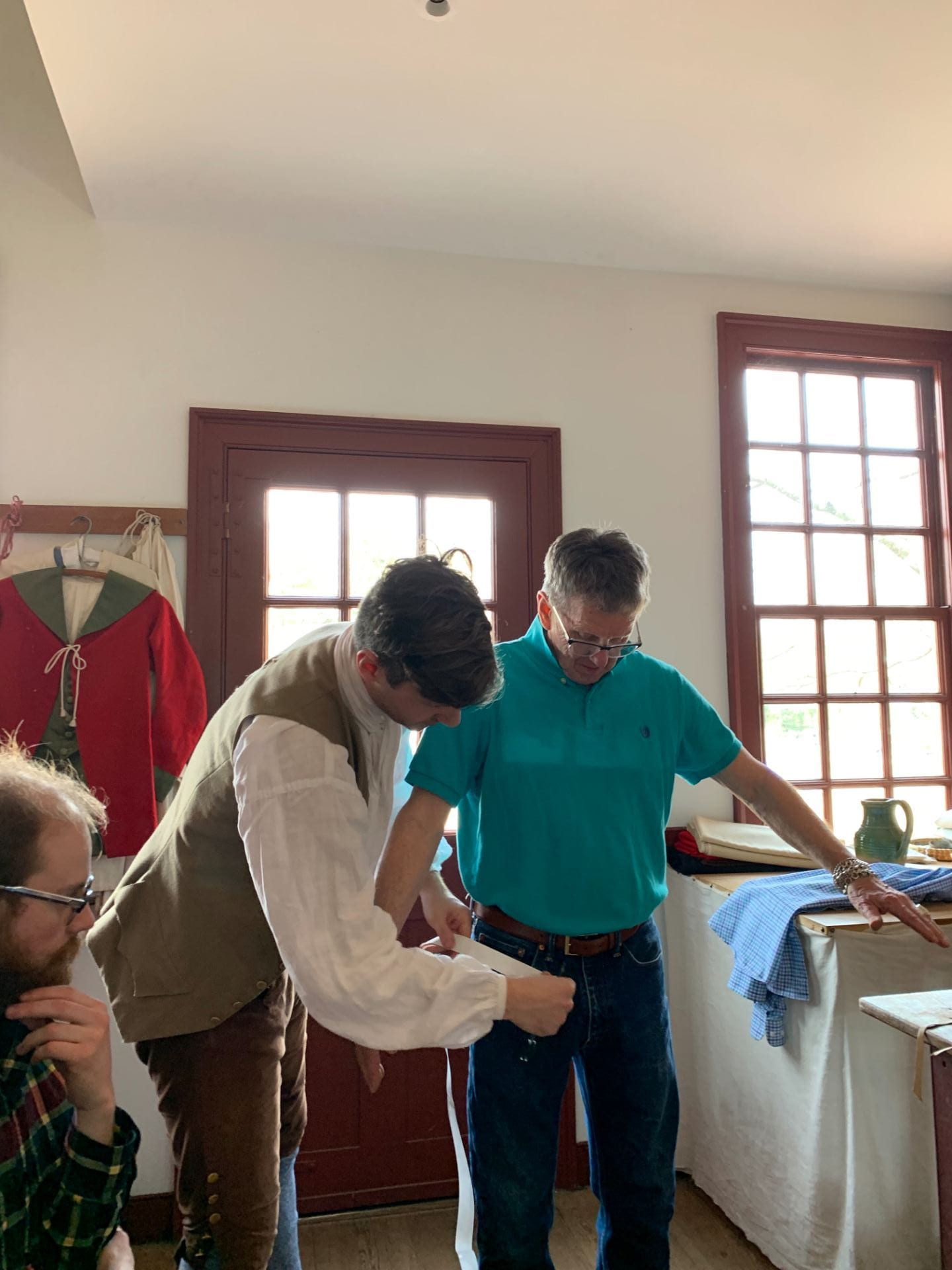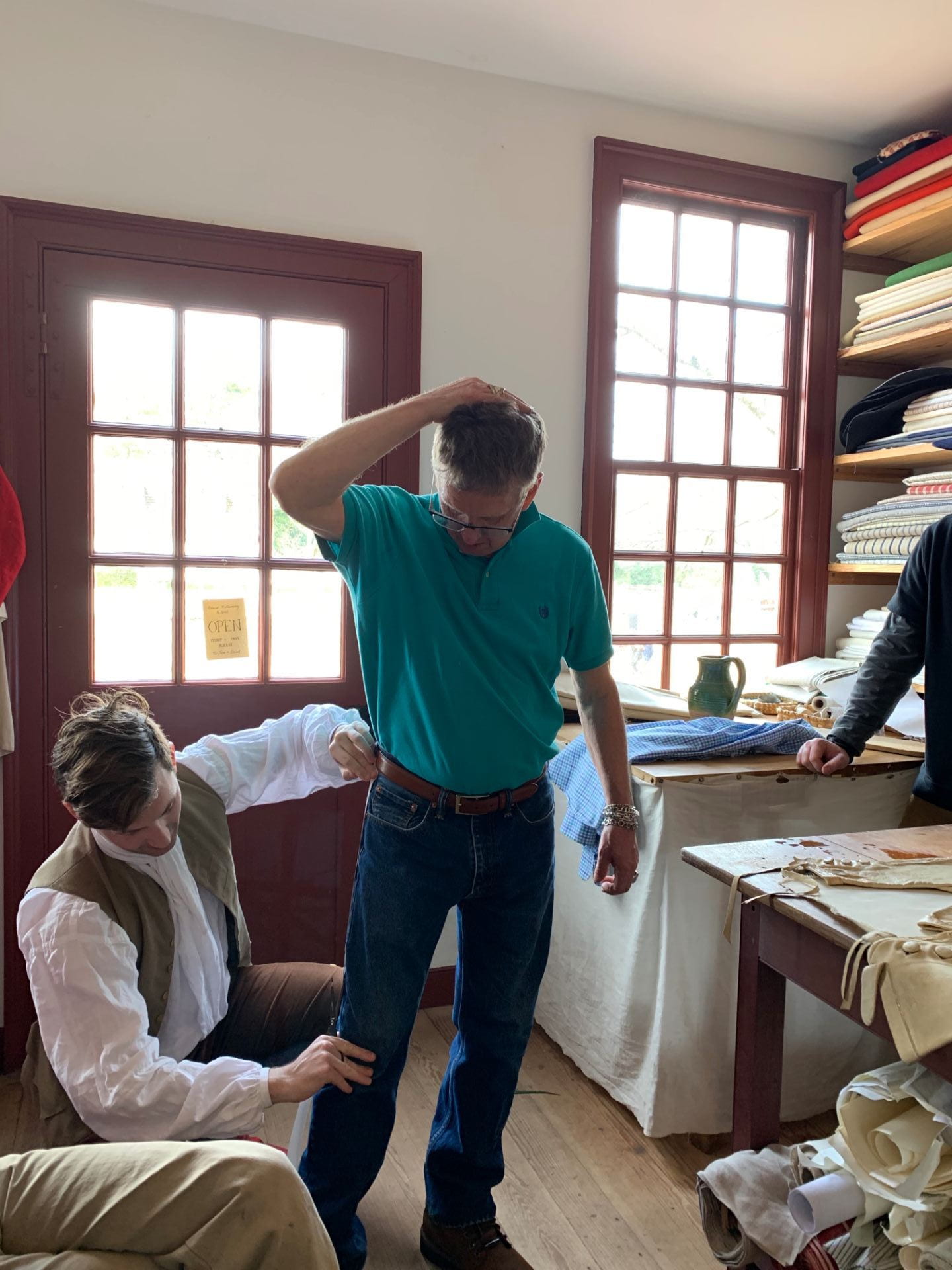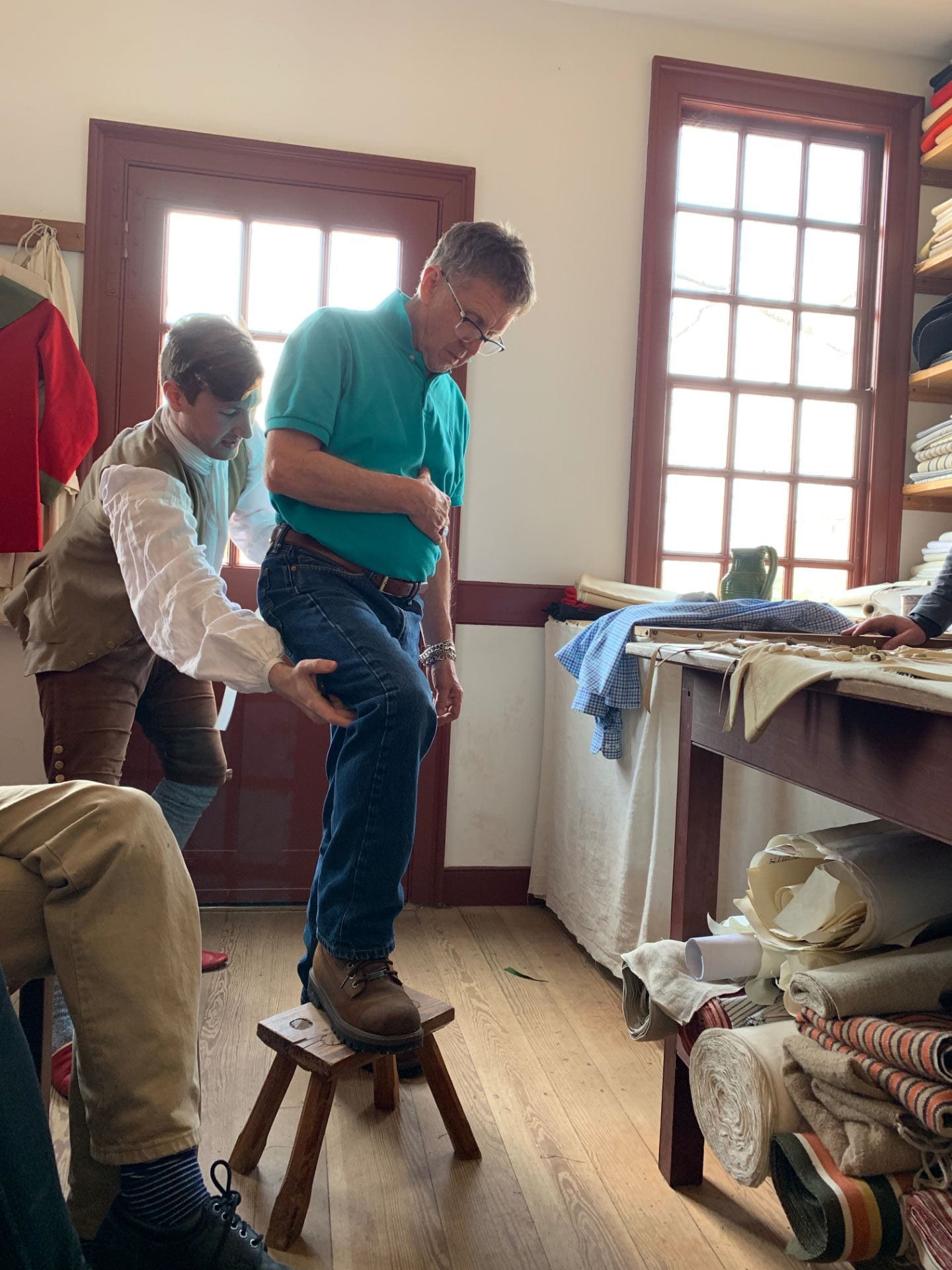The Durfey Tailor Shop on DoG Street: Bespoke Garments for The Everyman
By Paul Thien, MALS Student at the University of Delaware
The “Tailor” section in The London Tradesman, written by R. Campbell in 1747, partially prepared me for the eighteenth-century clothing experience. I can attest to the accuracy of the meaning of the word Tailor- “the art of cutting.” Campbell believed the tailor “… ought to have a quick eye to steal the cut of a sleeve.” I volunteered as the recipient of a custom-tailored pair of “under-breeches.” The skill of the cutting is in the fit of the final garment.

The Journeyman, Mike McCarty, stands in front of shelves of carefully documented fabrics that would have been found in an eighteenth-century Tailor Shop. On the counter in front of him are historically researched garments made by him in the Durfey Tailor Shop.
The shop itself was not what I expected. Most people with a 21st Century lens would expect a tailor’s shop to have racks of garments, fabrics, accessories – and even some mannequins. In the mid-eighteenth century, the function of the tailor was to design, measure, cut, and fit clothing for the individual. This included male or female, rich or poor, farmer or tradesman, plantation owner or enslaved—all clothing was bespoke. Consequently, the shop was modest in size, brightly illuminated, well stocked with fabrics for all tastes and budgets, embellished with a few finished garments to demonstrate the skill of the master, and populated by three people.

The Journeyman is wearing a garment that he made for himself that demonstrates the correct fit of clothing from the period. He commented on his interpretation of the button-hole details.
The master, almost always male, was the owner and responsible for the quality of the clothing, profitability, and the customer’s satisfaction. In smaller shops, he was the most likely person to cut the pattern. The journeyman was the core of the business. He had the skills to take patterns, design the clothing, cut the fabric, sew the garment, and deliver the finished product to the customer. His goal was to open his own shop or become a partner. The apprentice did all the miscellaneous labor. In addition to basting and stitching the garments together, he cleaned, fed fires, hauled water, ran errands and did anything the master required. His goal was to become a journeyman.
- Here are four views of the Journeyman taking measurements for my bespoke under-breeches. Photos by Brooke Baerman, WPAMC Class of 2019.
My experience began with the journeyman, Mike McCarty, measuring me for the garment. He pinned together two long narrow strips of paper, and armed with a pair of small scissors, began measuring and snipping tiny notches at key registration points; the notches were a code he used to translate the three-dimensional form into flat patterns. This included the waist at the appropriate position on the hip, the inseam, the length from the waist to below the knee, the circumference of the thigh, and the measurement above and below the knee.
Moving behind the tailor’s counter, he spread out a large piece of fustian. A mixture of linen and cotton, the fabric was the color of wheat and the texture of soft wool. He then translated his notches and marks to the fabric with a pencil and flat pattern to outline the garment’s outlines. At this point, he used a pair of large scissors to begin cutting segments of the garment. Halfway through the cutting, he turned the project over to the apprentice. The apprentice, Tim Logue, finished cutting and repaired to the back room to sew while the journeyman fielded questions about the practices of an 18th-century shop. Not only was he knowledgeable, but his conversation did not falter from the beginning of the measuring process until the final garment appeared.

This peculiar image demonstrates the close fit of the under-breeches, which would function perfectly without the jeans. We were told that this garment was devised to protect the expensive outer- breeches and would have been sewn into their interior.
For practical purposes, I tried them on over a pair of jeans. In the 18th century, visiting the tailor’s shop was an intimate experience and there would have been no such modesty. At this point, we learned that this garment was sewn into the interior of the more expensive breeches. When dressing, the gentleman would don a long shirt of thin fabric, the tails of the shirt would be gathered between the legs, and the breeches would be pulled up and buttoned. This arrangement ensured cleanliness and protected the expensive outer garments from soiling.
Another important takeaway was the knowledge of the blurred lines between male and female patronage. The tailor performed the same function for both sexes. The patron would select fabrics, accessories, and trims, and these choices would dictate the ultimate price. The labor costs were based on the complexity of the garment. Until the revolution, all fabrics were imported and reflected the tastes of the members of the colony.
The most important knowledge that I came away with was the actual function of the tailor in the 18th century. Translated to this century, I have just described the enormously expensive couture industry. In Durfey’s shop, this experience was available to everyone. Another revelation was that the tailor might also perform all his functions in the home, and deliver the entire cut garment with thread, buttons and trim to the client. The final sewing would be done in the household. This in-home service is the ultimate of a bespoke house-call.






Leave a Reply